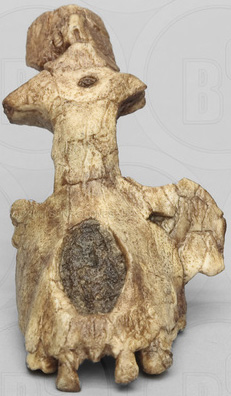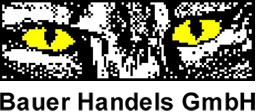Mensch: Stammesgeschichte
Saadanius hijazensis
Saadanius hijazensis
"SGS-UM2009-002".Schädelteil eines fossilen Primaten, ca 28,5 Millionen Jahre alt.
Separater Ständer auf Anfrage (Artikel S-BH-043)
Beschrieb in Englisch:
28-29 MYA. The partial cranium of a fossil primate Saadanius hijazensis was discovered by paleontologist Iyad Zalmout in 2009 in the Shumaysi Formation in the Al Hijaz province in western Saudi Arabia and was excavated by a joint Saudi Geological Survey and University of Michigan team. Analysis indicates that it was an adult male of medium size, weighing about 33-44 lbs. Zalmout and colleagues (2010) place the fossil within the Catarrhini (the group comprising both cercopithecoids-Old World monkeys and apes) and differentiate it from other Oligocene Afro-Arabian finds with the designation of a new superfamily. While primitive catarrhine features predominate the cranium, the presence of a tubular ectotympanic-a bony ear tube- led Zalmout et al. to consider this an advanced stem catarrhine, suggesting closer ancestral tries to crown (extant) forms. Saadanius is also significant as it helps to fill a gap in the fossil record between 23-30 mya, which is the time during which Old World monkeys and apes diverged. As such, this find may be important to debates concerning both the features that characterized the last common ancestor of Old World monkeys and apes (the presence of a longer monkey-like versus shorter ape-like faces) and the timing of the split between the two (after 29 mya). Bone Clones© recreated this partial cranium based on the latest literature, including descriptions, measurements and photographs. The Bone Clones® Hominid line is composed of discoveries from anatomically modern humans, archaic humans, early Homo, early hominins, and other hominids. The majority of the casts in this line have been recreated by our team of anatomical sculptors. Some are reconstructions made by anthropology professionals using fragmentary elements from original discoveries and extrapolating the missing parts from those (i.e. Neanderthal skeleton). A small portion of the hominin line has been cast from original material. Custom display stand available below.
Zalmout, I.S. et al. 2010. New Oligocene primate from Saudi Arabia and the divergence of apes and Old World Monkeys. Nature 466,7304:360-364.
Beschrieb in Englisch:
28-29 MYA. The partial cranium of a fossil primate Saadanius hijazensis was discovered by paleontologist Iyad Zalmout in 2009 in the Shumaysi Formation in the Al Hijaz province in western Saudi Arabia and was excavated by a joint Saudi Geological Survey and University of Michigan team. Analysis indicates that it was an adult male of medium size, weighing about 33-44 lbs. Zalmout and colleagues (2010) place the fossil within the Catarrhini (the group comprising both cercopithecoids-Old World monkeys and apes) and differentiate it from other Oligocene Afro-Arabian finds with the designation of a new superfamily. While primitive catarrhine features predominate the cranium, the presence of a tubular ectotympanic-a bony ear tube- led Zalmout et al. to consider this an advanced stem catarrhine, suggesting closer ancestral tries to crown (extant) forms. Saadanius is also significant as it helps to fill a gap in the fossil record between 23-30 mya, which is the time during which Old World monkeys and apes diverged. As such, this find may be important to debates concerning both the features that characterized the last common ancestor of Old World monkeys and apes (the presence of a longer monkey-like versus shorter ape-like faces) and the timing of the split between the two (after 29 mya). Bone Clones© recreated this partial cranium based on the latest literature, including descriptions, measurements and photographs. The Bone Clones® Hominid line is composed of discoveries from anatomically modern humans, archaic humans, early Homo, early hominins, and other hominids. The majority of the casts in this line have been recreated by our team of anatomical sculptors. Some are reconstructions made by anthropology professionals using fragmentary elements from original discoveries and extrapolating the missing parts from those (i.e. Neanderthal skeleton). A small portion of the hominin line has been cast from original material. Custom display stand available below.
Zalmout, I.S. et al. 2010. New Oligocene primate from Saudi Arabia and the divergence of apes and Old World Monkeys. Nature 466,7304:360-364.




Hersteller:
| Bone Clones |  |
Alle Preise zuzüglich MwSt und Versandkosten

